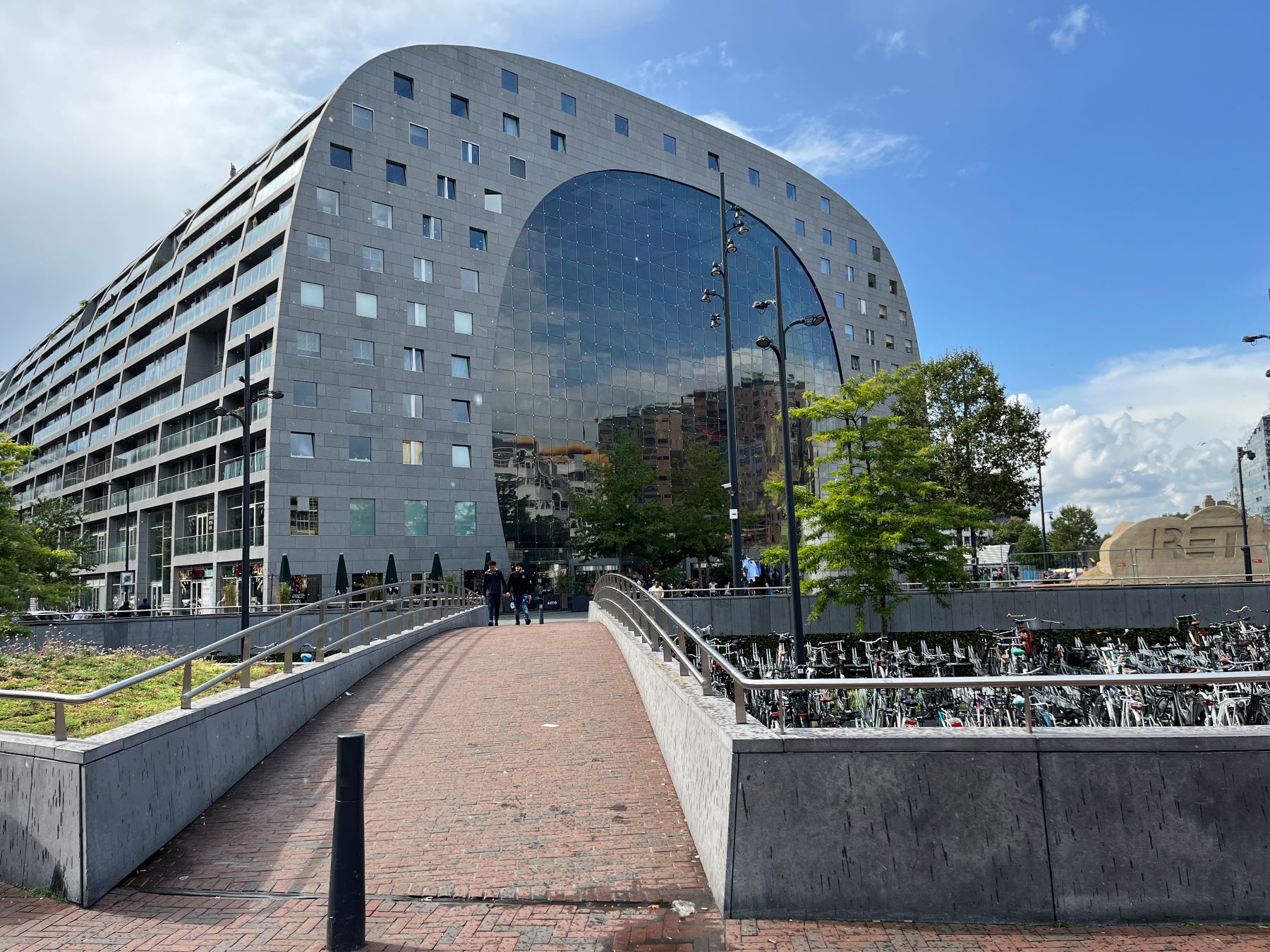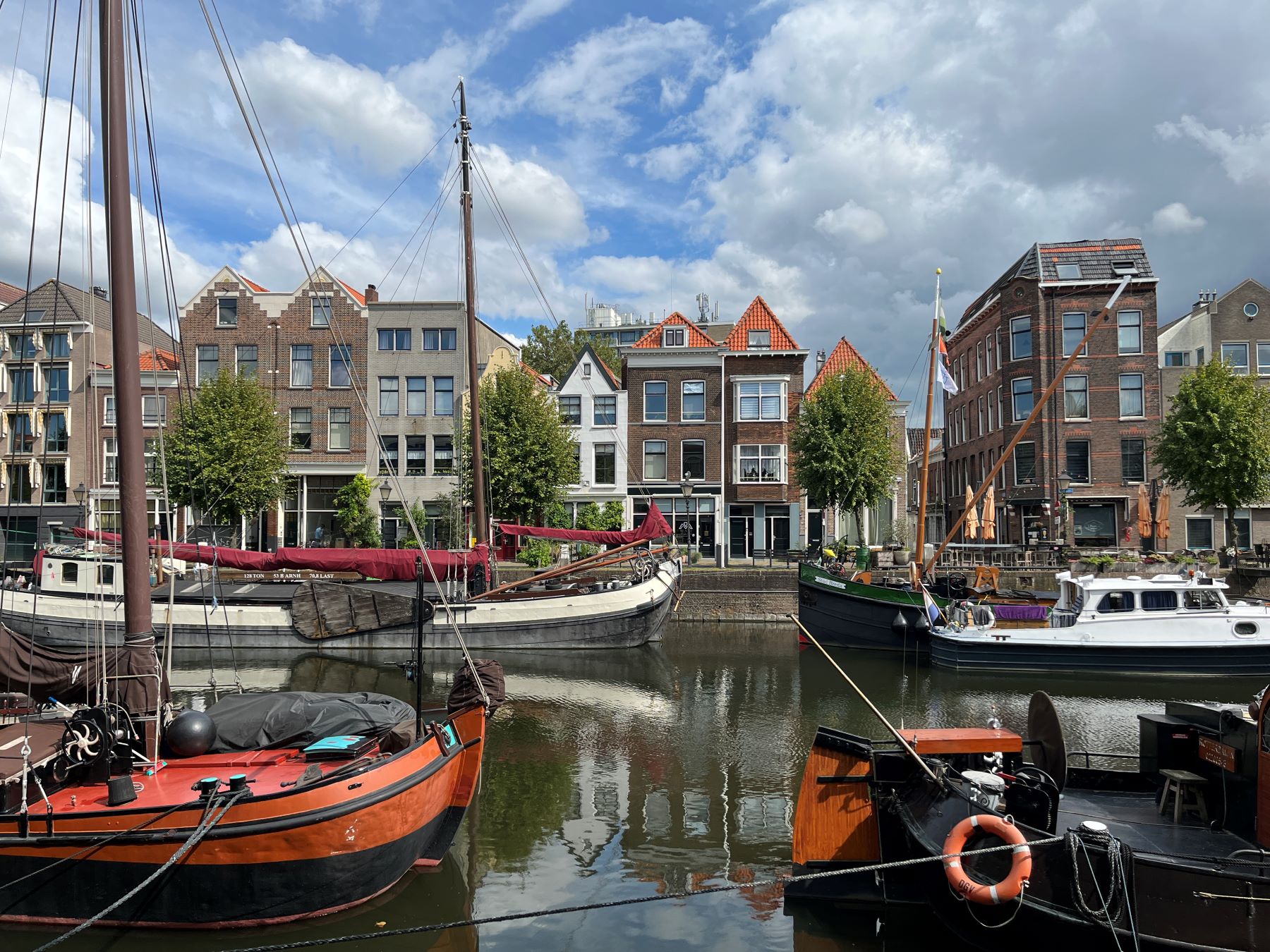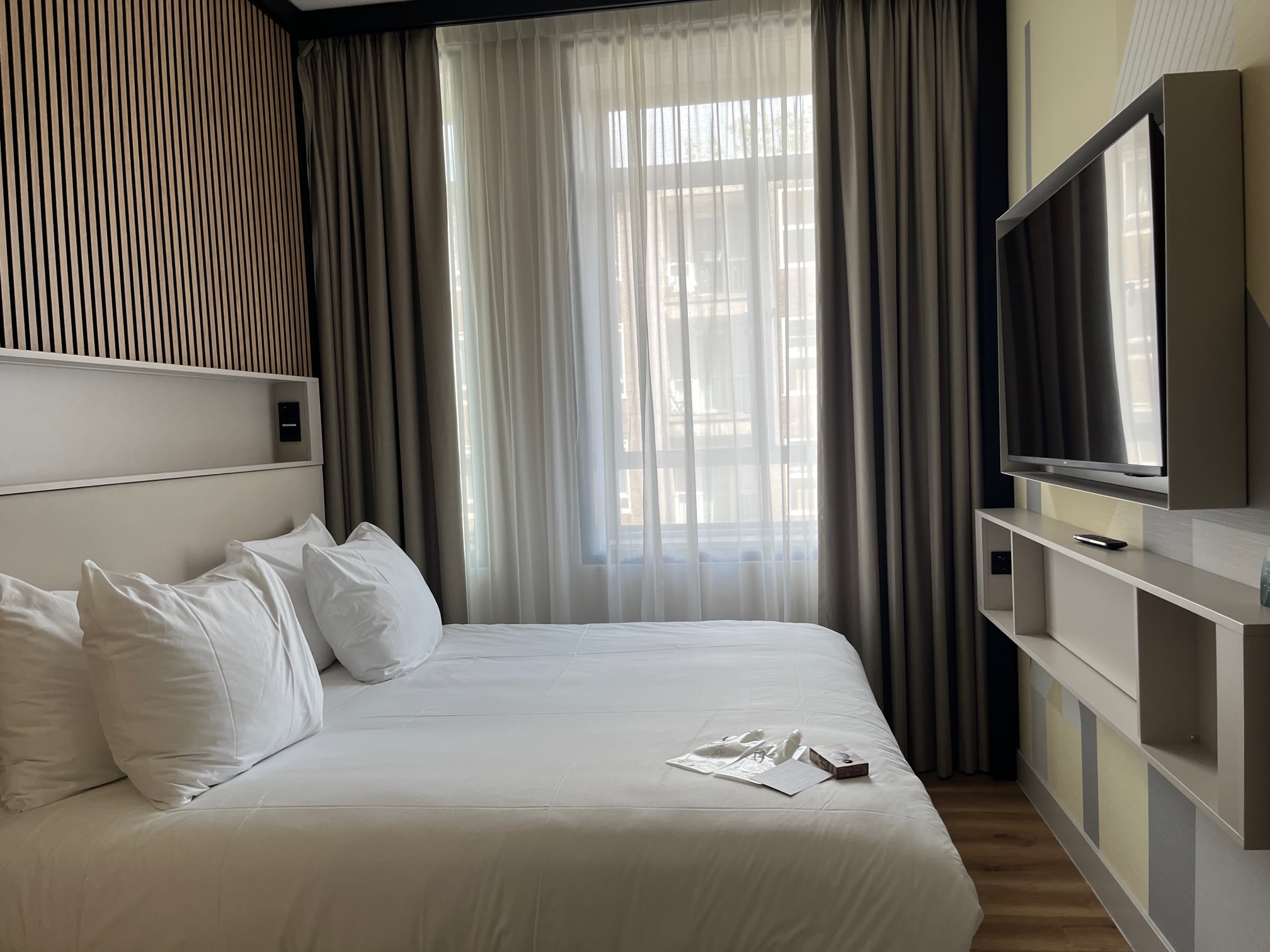Where exactly is it? The Netherlands’ second city is handily accessible on the Eurostar; the newish direct service means it’s just over three hours (3hr 16 to be precise). It’s also 40 mins from Amsterdam, so you can even combine both cities.
Why? Well, we all know Amsterdam, with its impossibly pretty cobbled streets, neverending canals and unfathomable levels of tourism: Rotterdam, in South Holland, is an ideal contrast. Sure, there’s water – it’s the fourth largest port in the world, in fact – and there are rivers, canals and harbours at every turning. But this sprawling metropolis doesn’t yield its pleasures as easily as its more famous sibling. You have to hunt them out, in fact.

So what goes on there? In a nutshell, some of the world’s more impressive modern architecture. In 1940, WWII bombing culminated with the destruction of the entire historic city centre – other than the City Hall – an event sometimes referred to as the Rotterdam Blitz. Post-war the decision was made to rebuild with a new spatial infrastructure making it an open and modern city.

Some highlights? Too many. There’s the vast food hall Markthal, the futuristic Central Station, the famous Cube Houses, the 1960-built retro-futuristic Euromast and the wonderful buildings in the Museumpark. There’s the Erasmus Bridge and Willems Bridge, too. One favourite of mine is the Depot, an ambitiously huge 94 million spaceship-style dome which is a self-styled storage for the city’s art collection. Hung in pioneering and unstuffy ways, it’s immersive, playful and clever, with a terrace cafe boasting panoramic views (and excellent coffee).
I’m hungry now. Where should I eat? Over in up-and-coming Katendrecht are some destination bars and restaurants. We loved Fenix Food Factory, a small craft beer and natural wine bar with bookshop and restaurants on the water. It’s the perfect spot to watch the sun set – also opposite the famous Hotel New York.

Anywhere else? Lots: the Markthal is a brilliant first stop for all manner of world streetfood. Recommended is 21 Pinchos, where you can sit at the counter and choose five meaty, fishy or vegan toppings on baguette slithers from the counter for 13 euros.
The city’s 180 nationalities mean there’s a hugely diverse food scene, touched upon in the Bite Food Tour, which takes in six streetfood joints off the beaten track, from classic textbook chips at Dutch fastfood chain Bram Ladage to vegetarian Malaysian sesame crepes, Puglian panzerotto, oozy truffle croquettes and Surinamese curry chicken rolls. Luckily the tour takes around three hours and covers 6km, so you can walk it off (while also learning about key sculptures and landmarks).
Another meat option is also Iron Lady steakhouse, clearly influenced by upmarket UK chain Flat Iron, where the signature cuts were sliced pink on a wooden board, tender and delicious, even if the concept was slightly off (let’s forget all references to Thatcher, OK?)

A foodie highlight? One of the city’s best restaurants is also based in Katendrecht: De Matroos on Delistraat is a buzzy dining room with checked tablecloths and rather retro furnishings. It serves a cutting-edge blind menu of four or five courses: over several hours we devoured tiny tomato tarts, blackened corn on the cob with popcorn and popcorn ice cream, slow-cooked egg and fennel, turbot and mushrooms in a meaty stock and a very textural nectarine, apple and sumac cream. The matching wine-tasting was a journey, too. Even the sourdough was next-level.
How about a pub crawl? Easy: as well as Fenix there’s a whole row of bars and cafes on Witte de Withstraat, including NRC and – our fave – the hidden gem cocktail bar Spikizi. There are some fun LGBTQ bars too, especially Ferry, Loge 90 and Cafe. The terrace in the library cafe also affords great views over the busy twice-weekly (Sat & Tues) Blaak market in the centre.

Don’t miss: the unbombed historic quarter of Delfshaven, above, a couple of stops on the Metro from the city centre. It’s arguably more picturesque than the prettiest corner of Amsterdam, with waterside pubs: my tip is Tapperij ‘t Kraantje – a microbrewery, and tucked-away restaurants (best not to visit on a Monday, as we did, as almost nothing was open).

Where can I stay? We loved the Motto, a new brand of Hilton that’s sustainable and ethical. It’s located in a cleverly converted bank with circular dining room (theatrical fish restaurant Pesca) a bar and workspace area, all furnished in mid-century modern (don’t miss the huge wooden squirrel near reception and the ‘Fish That Don’t Exist Yet’ installation artwork in the toilets). Photos and memorabilia from its former incarnation dot the walls. Bedrooms (above) are fairly petite, sparkling white with, intriguingly, no separate bathroom but toilet and shower cubicles accessed off the room. Staff are super helpful and the hotel is located perfectly near the Markthal and Blaak district so you can walk everywhere.
Main image: Stephen Emms
Weekendr were guests of Rotterdam.


